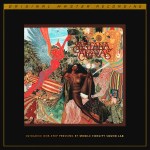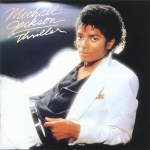
More Letters from Fans and Detractors Alike
Record Collecting for Audiophiles from A to Z
Jack contacted us recently about doing shootouts for records we rarely do shootouts for:
Hello Tom,
I am thinking about opening an online record store based on the same hot stamper methodology as Better Records, only I focus on genres that you do not cover, such as rap, metal, punk, hardcore, post-punk, noise and other niche genres.
Thus I am trying to get a sense of what it would take to make this project work. Did you have a reputation in the audiophile community prior to starting Better Records that drove people to your store?
The other question I am wondering is about equipment. Do you think that one has to have extremely high-end equipment (e.g., $5000 tone arms and the like) to properly tell whether a record is a hot stamper?
Finally, do you think that your methodology could work on LPs released post-1990, when there are far fewer variants of an album available? Any insight you could offer would be much appreciated.
Regards, Jack
Jack,
You need to follow our approach to the letter. The basics of it can be found here:
For a deeper dive:
This would be a good budget to start with:
- Cleaning system: $10k.
- Stereo: $40k.
- Dedicated sound room: (not cheap)
- Staff to help with the work: 3-5.
- Years to figure all this stuff out: 10, at least. (This assumes you are twice as smart as me. It took me more than 20.)
Chances it will work: not very good. Better to find something else to do with your next ten years. I regret to inform you that this idea strikes me as a non-starter.
Best, TP
I sent Jack’s letter to one of my customers who has done some of his own shootouts, and here is what he had to say about it:
Tom,
Thanks for sharing it. You make it look easy, I guess!
Without a 30-day money-back no-questions-asked policy, nobody would buy anything from him. And, with a policy like that in place, he’d go broke in a month. Also, the raw materials he’s talking about just don’t support finding hot stampers. They are all overpriced. I have a couple hip hop albums that sound ok to me but sell for a small fortune on discogs. I’m not sure what people think they are buying, but it’s not sound quality. To find a copy that sounds really great, he’d have to charge more than you do.
That said, I’d gladly pay hot stamper prices for a copy of Maggot Brain or Joy Division’s Closer if they really sound like hot stampers.
I especially like his asking you if you had a reputation before you started Better Records. He probably means, “did everybody like you, like you could have been a youtube influencer?” You should tell him he has to have a reputation for disrupting peoples’ complacency, bringing the evidence, and not backing down.
Or you could simply point out to him there’s really no good vinyl anymore since the sourcing all became digital – which is exactly the time frame in which he thinks he’s going to find hot stampers.
Tom, I hope Fred’s got another 10-20 years still in him for this, because nobody else will ever be able to do what your company can do, and I don’t want to have to go back to finding good sounding records on my own. It’s just too expensive doing it that way.
Aaron
Aaron,
My “reputation” is something that I didn’t take the time to discuss with Jack. Everyone knows, or should be able to find out easily enough, that I am probably the most hated man in all of audio. A writer for a well-known newspaper who interviewed me confirmed as much on a number of occasions, with some of those he spoke with saying things not remotely fit to print in a family-friendly blog.
I accept my place on the “periphery” of the audiophile world.
The bulk of that world is clearly not for those of us who are very serious about audio or records, and there’s no reason it should be.
Two More Strikes
The records this gentleman wants to do shootouts for are indeed pricey and rarely do they sound very good.
Some of the main reasons our business has been successful is that many of the records we do shootouts for were made in the millions, and many of them are exceptionally well recorded, and in analog.
The albums we audition have the potential to sound great on pressings that, twenty years ago, were plentiful and cheap. The better titles are neither plentful nor cheap these days, but it seems our customers will pay the prices we must charge in order to carry on the business.
If our customers ever stop paying our prices, the overhead built into our operation would cause it to collapse pretty quickly. Let us hope that doesn’t happen before we can find Hot Stamper pressings of all your favorite albums!
Best, Tom


 More of the Music of Santana
More of the Music of Santana
 More of the Music of Led Zeppelin
More of the Music of Led Zeppelin

 One of our good customers, Robert Brook, writes a blog which he calls A GUIDE FOR THE BUDDING ANALOG AUDIOPHILE
One of our good customers, Robert Brook, writes a blog which he calls A GUIDE FOR THE BUDDING ANALOG AUDIOPHILE Wires dangling from the ceiling?
Wires dangling from the ceiling?
